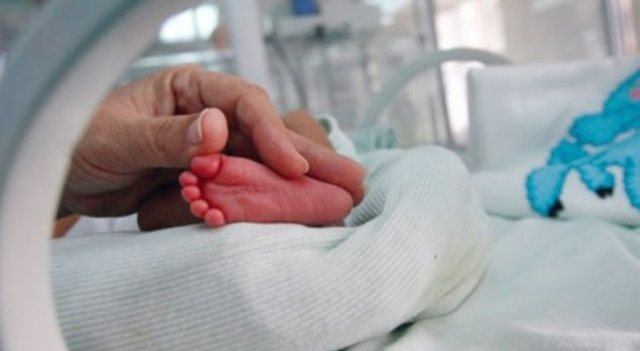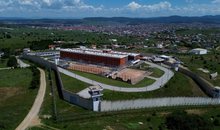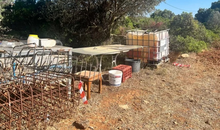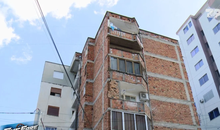
 Flash News
Flash News
Igli Tare officially appointed as Milan's new Sporting Director
Two brothers attempt to kill cousin in Kukës, one arrested after a year on the run
Artan Lame passes away, his mother confirms: This cursed moment came
2-year-old Dutch boy falls from third floor of Rinas hotel, taken to hospital
Vlora/ He hit the minor and fled the scene, the 27-year-old woman is wanted
Albania's aging and depopulation! In 5 regions, births fell by 10-19%, the South most affected

The country's economic growth is not translating into better living conditions in the country, as the decline in births is deepening year by year. Nationally, babies born in 2024 recorded an annual decline of 5 percent, but in some regions it was many times higher.
According to detailed INSTAT data, the Gjirokastra region led the way for the largest drop in fertility with over 19% in 2024. In the southern region, only 317 babies were born last year, down from 393 in 2023. Compared to 2020, births in the Gjirokastra region fell by 37 percent.
This region has been experiencing a significant decline in birth rates for years and at the same time has the highest dependency on the elderly. At this rate, after 6 years in this region there will be about 12 first grades if no children emigrate.
After Gjirokastra, the regions with the largest drop in births above the national average were Berat with -12.6%, Vlora with -12.6%, Korça with -11% and Lezha with -10%.
The decline in births was present in all regions, but in some it was lower than the national average. For example, in Shkodër births fell by 0.1% in 2024, in Dibër by -0.3%, in Kukës by -2.7%, in Fier by -3.5% and in Tirana by -4.5%.
As can be seen from the graph below, the South of the country has higher rates of declining birth rates due to its older population structure.
Despite the high emigration in recent years, the north continues to have the youngest population, also due to the tendency to have more births.
The opposite has happened in the South, where earlier immigration has aged the region more quickly.
Northern cities, although they recorded the highest population decline in the period between the two censuses, still have a younger population structure than the rest of the country.
Data from the 2023 Census at the municipal level show that Hasi and Kukës have the highest youth dependency ratio at 35 years old and 33% each.
According to the 2023 census data, there were approximately 374,000 young people aged 0-14 in the entire country, which constituted 15.5% of the total population. 26% of this age group is in the Municipality of Tirana and 12% in the Municipalities of Durrës and Kamza.
The overall population declined by 14.8%, while in the younger age groups, this ratio was more than twice as high.
Statistics experts explain this decline with the high emigration of young people and families with children after 2016, through the new form of emigration, economic asylum. The age groups 10-14 years old (41%) and 20-24 years old (41%) also experienced a decline of over 40%.
On the other hand, the municipalities of Himara, Pustec, Finiqi, and Dropulli have an age dependency ratio of over 60%. This means that the elderly over 65 years old in these municipalities make up more than half of the population./Monitor
Latest news





Tirana Lake Park, a campaign center for Noizy. The signatory is silent
2025-05-23 21:55:02



What's happening in Gaza, the struggle for survival in times of war in pictures
2025-05-23 21:02:54
DW: Germany strengthens the return of illegal migrants!
2025-05-23 20:39:57


Knife attack at Hamburg train station, 12 injured
2025-05-23 19:54:58
120 children go missing every year in Albania, 12 still missing in 30 years
2025-05-23 19:35:35
US court suspends order banning Harvard from admitting foreign students
2025-05-23 19:22:41
Zodiac signs that become luckiest after the third decade of life
2025-05-23 19:19:06
Igli Tare officially appointed as Milan's new Sporting Director
2025-05-23 19:01:12




Istanbul Agreement, Ukraine and Russia exchange 800 prisoners
2025-05-23 17:54:20



Belina Pupa reacts to serious accusations in Australia for drug cultivation
2025-05-23 16:59:55


The Llogara tunnel opens tomorrow, until when will it be free of charge?
2025-05-23 16:09:31






The first prisoners from Denmark are expected to arrive in Kosovo in April 2027.
2025-05-23 14:51:26
May 11/ Celibashi approves the summary tables of results for 4 districts
2025-05-23 14:50:04
Trump threatens tariffs on EU goods and iPhones
2025-05-23 14:39:47
Artan Lame passes away, his mother confirms: This cursed moment came
2025-05-23 14:26:48
Divorce map in 61 municipalities, the South far ahead of the North
2025-05-23 14:15:16
2-year-old Dutch boy falls from third floor of Rinas hotel, taken to hospital
2025-05-23 14:01:40
Europeans, you have slandered us.
2025-05-23 13:54:00
Vlora/ He hit the minor and fled the scene, the 27-year-old woman is wanted
2025-05-23 13:41:24
Arrested today in Lalëz, who is Flobens Meçja, was paid by Çopja to kill Alibej
2025-05-23 13:33:43
Here's how many hours you should sleep depending on your age
2025-05-23 13:32:16
Berisha reveals when he will leave politics
2025-05-23 13:12:15
Three proven ways to dismantle an autocrat
2025-05-23 13:03:16
"The goods are 800-cents", how Altin Morina trained RENEA and made bargains
2025-05-23 12:59:07
Berisha: Poja was Rama's guest, Surreli was used for gang meetings
2025-05-23 12:49:22



Meta: The criminal regime destroyed the elections, a threat to democracy
2025-05-23 12:16:48



From money to betrayal, everything turns upside down for these three signs
2025-05-23 11:32:44



Albanians, the second most rejected at EU borders in 2024
2025-05-23 10:41:04





RENEA action in Durrës, checks mainly in Sukth and Shijak
2025-05-23 09:33:13


Foreign exchange, May 23, 2025
2025-05-23 08:47:28

Horoscope, what do the stars have in store for you today?
2025-05-23 08:15:27
Temperatures are rising, what is the weather expected to be like during the day?
2025-05-23 08:01:25
Morning Post/ In 2 lines: What mattered yesterday in Albania
2025-05-23 07:48:25

Diaspora vote, Berisha: The envelopes were filled in Albania
2025-05-22 22:45:58
"Notify the DEA", Abilekaj: Internationals do not trust our institutions
2025-05-22 22:30:07
Operation "Bridge", journalist: SPAK was used as an election certifier
2025-05-22 22:07:35
Berisha: Rama won 28 mandates with criminal gangs
2025-05-22 21:58:18

Fevziu clarification for Artan Lamen: He is still alive, but in a coma
2025-05-22 21:44:33




Which of the punitive measures has the EU started to remove from Kosovo?
2025-05-22 20:49:38
Këlliçi: SPAK acted after the elections, directed by Rama
2025-05-22 20:42:10



EU Integrity for Sale: Tirana Edition
2025-05-22 19:51:52
Plane crashes into homes in San Diego, California, several casualties reported
2025-05-22 19:49:43
May 11th Elections, Source: With the Bulgarian Train, he wins 300 thousand votes
2025-05-22 19:34:16
Citizens pay out of pocket for health funds at the lowest level since 2017
2025-05-22 19:21:43
After three terms/ Erdogan: He will not run for president again
2025-05-22 19:08:35

SPAK seized two properties in 'Kodra e Diellit', Veliaj and Xoxa's lawyers react
2025-05-22 18:42:25

Symbolic or essential? The risk of women's representation in the new Parliament
2025-05-22 18:14:54
